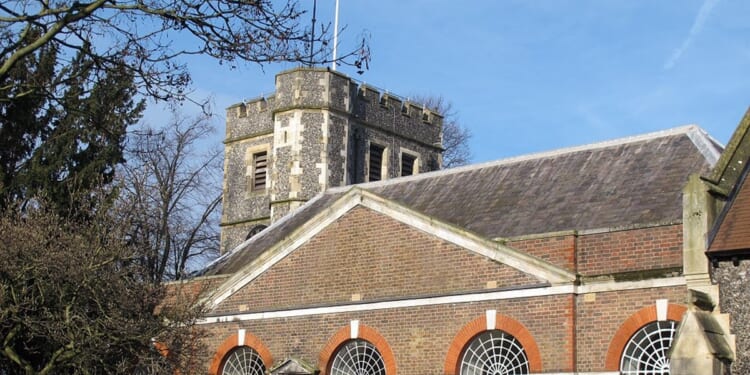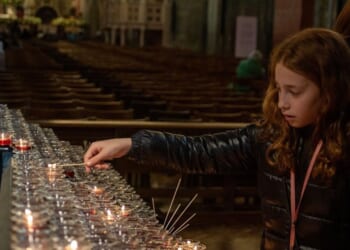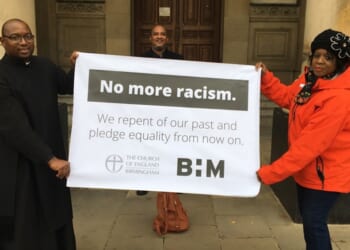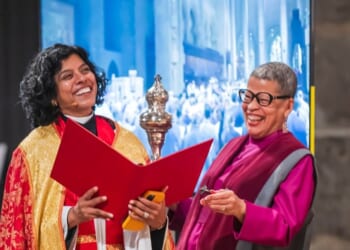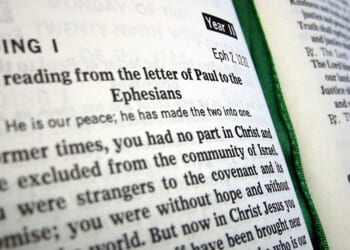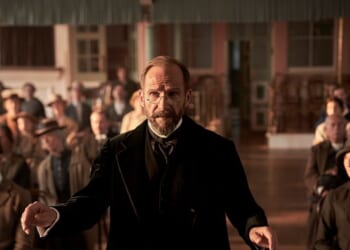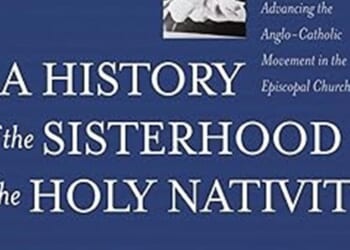THE ring of bells in St Mary Magdalene’s, Richmond, which has been in the church since 1760, is to be remodelled and rehung, after the Consistory Court of the diocese of Southwark granted a faculty.
The body of the Grade II* listed church dates from the 18th century. The tower, however, is from the remains of a late-14th-century medieval building.
A ring of six bells was cast for the church in about 1680 by James Bartlett, and was increased to eight bells by Robert Catlin in 1740. One of the bells proved unsatisfactory and was replaced by a new tenor bell, by Lester & Pack, in 1760.
The current ring consists of the eight bells, the heaviest (the tenor) being more than 18 cwt, and the lightest (the treble), more than four cwt. It is, therefore, intrinsically a heavy ring, and is termed by bell-ringers as “difficult”. Because of the size of the tower, the wheels are smaller than would ideally be the case, and the bells feel heavy to ring.
The sound of the bells is also not good, particularly the tone of the tenor. The obvious remedy to rectify the difficulty in ringing the bells and improving their sound would be to install an entirely new ring. But that proved impractical, and attracted objections from others, including Historic England.
The bell-ringers, supported by the PCC, proposed as an alternative that the tenor be melted down and the metal used towards the casting of five new bells. Four of the old bells would be displayed elsewhere within the church, and in the clock room of the tower. The bells would then be easier to ring and be more tuneful.
The two churchwardens and the tower captain applied for a faculty for the work. The bell-ringers explained that there was a long history of the training of new bell-ringers being a frustrating experience because new recruits gave up after feeling that they were not getting anywhere. That, in turn, made experienced bell-ringers reluctant to start teaching new recruits.
The Diocesan Chancellor, the Worshipful Philip Petchey, said that “if ringing were indeed to die out, this would be very sad for the art and practice of bell-ringing, but it would also mean that the bells would no longer summon the people of Richmond to worship.”
In accordance with the guidelines set out by the Court of Arches, the Consistory Court needed to consider whether the bell-ringers’ proposals, if carried out, would result in harm to the church as a building of special architectural or historic interest.
The Chancellor decided that it would cause such harm. But, he said, the harm was “not of such an order of magnitude as to make it unlikely that it could be outweighed by public benefit”.
The justification for carrying out the proposals was “clear and convincing”, the Chancellor said, both for “the improvement to the sound of the ring and in the facilitation and encouragement of bell-ringing in this tower”.
If the bells fell silent because the old historic ring was being preserved, that would be of limited value, because nobody would hear the preserved bells, the Chancellor said. “Moreover, the mission of the church would be impaired as the bells no longer called people to worship.”
The faculty was granted, and the Chancellor hoped that the bell-ringers would consider the tradition that, when a bell was recast, its inscription was replicated on the new bell that was cast from it.
The Chancellor also attached a condition that a visual and aural record be made of the existing bells, and appropriately stored with parish records, and offered to the local history library.
It was often the case that a final peal was rung on a ring of bells that were due to be recast. If that happened, the Chancellor said, “it would be appropriate for such a peal to be recorded.”

